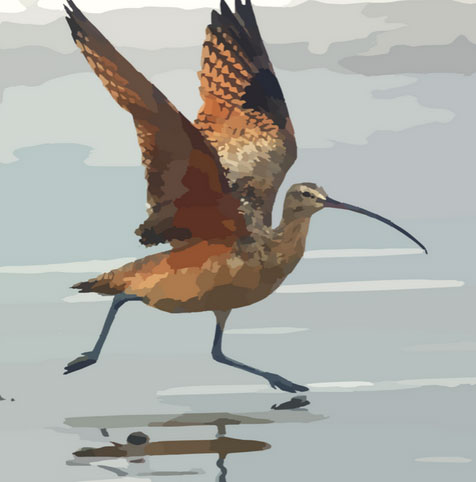 Shooters are being called on to help reverse the decline of the UK breeding curlew population, which stands on the brink of collapse.
Shooters are being called on to help reverse the decline of the UK breeding curlew population, which stands on the brink of collapse.
The population is in rapid decline, with the wader now listed as globally near-threatened.
Ahead of World Curlew Day tomorrow, BASC is urging members and others who shoot to record sightings of the bird in a bid to compile a nationwide picture which could be used to plan how to halt and potentially reverse the decline.
Data can be easily entered onto BASC’s Green Shoots Mapping website. BASC needs data on sightings between April and July.
Ian Danby, BASC’s head of biodiversity projects, said: “The curlew, with its long legs, large brown body and long downward curving bill, is a is familiar sight to many. They are most easily seen in winter on estuaries when large numbers arrive before returning in the spring. However, our UK breeding curlew population stands on the brink of collapse. Data shows a 46 per cent decline in breeding curlew in the UK between 1994 and 2010, with over 50 per cent declines in Wales and Scotland.
“The trajectory is still a rapid decline and they are now listed as globally near-threatened. Breeding success, or lack of it, is the most pressing challenge the bird faces. This is thought to be connected to a number of factors including, predation, afforestation, changes in land management and climate change.
“In many places the numbers are so low that the established general breeding bird surveys do not encounter them enough to give us reliable information. That is why we are calling on people who see curlew between later April and July to make a note and share the knowledge. If we don’t know what we have then we cannot plan to conserve them.”
BASC has a dedicated curlew web page which includes a short video on how to record curlew sightings.
Robin Marshall-Ball, a member of BASC council and conservation specialist, said: “BASC is engaged in a number of wader projects with groups throughout the UK, including the new Curlew Cymru initiative in Wales. This bird could be extinct as a UK breeding bird if we do not act and we encourage anyone to share records of curlew breeding attempts and engage with local projects.”
Earlier this year, BASC attended a conference in Wales aimed at discussing the battle to save the curlew. Curlew numbers in Wales are said to have fallen 81 per cent between 1993 and 2006. It is estimated that 500 breeding pairs remain and there are fears that breeding curlews could be lost from Wales within the next few decades without action.